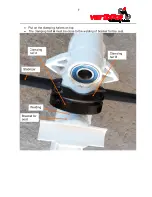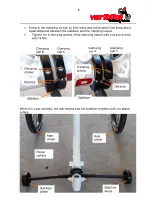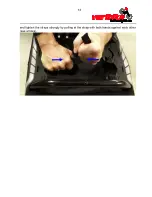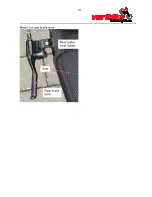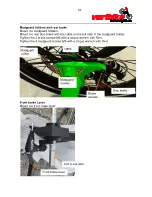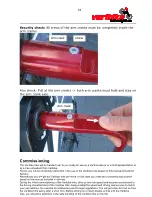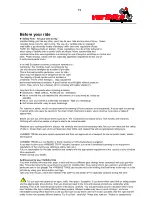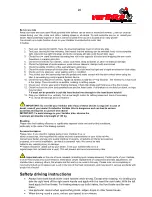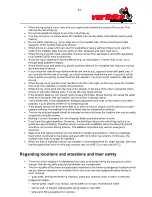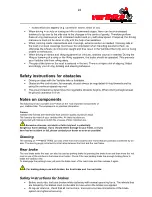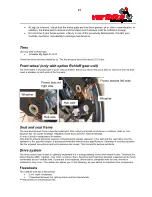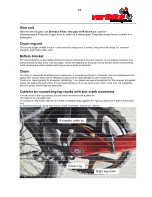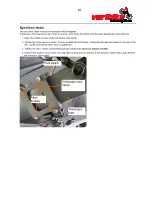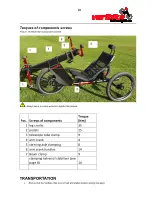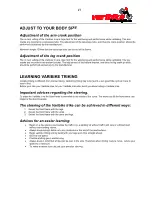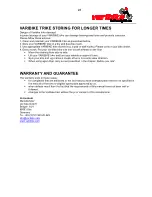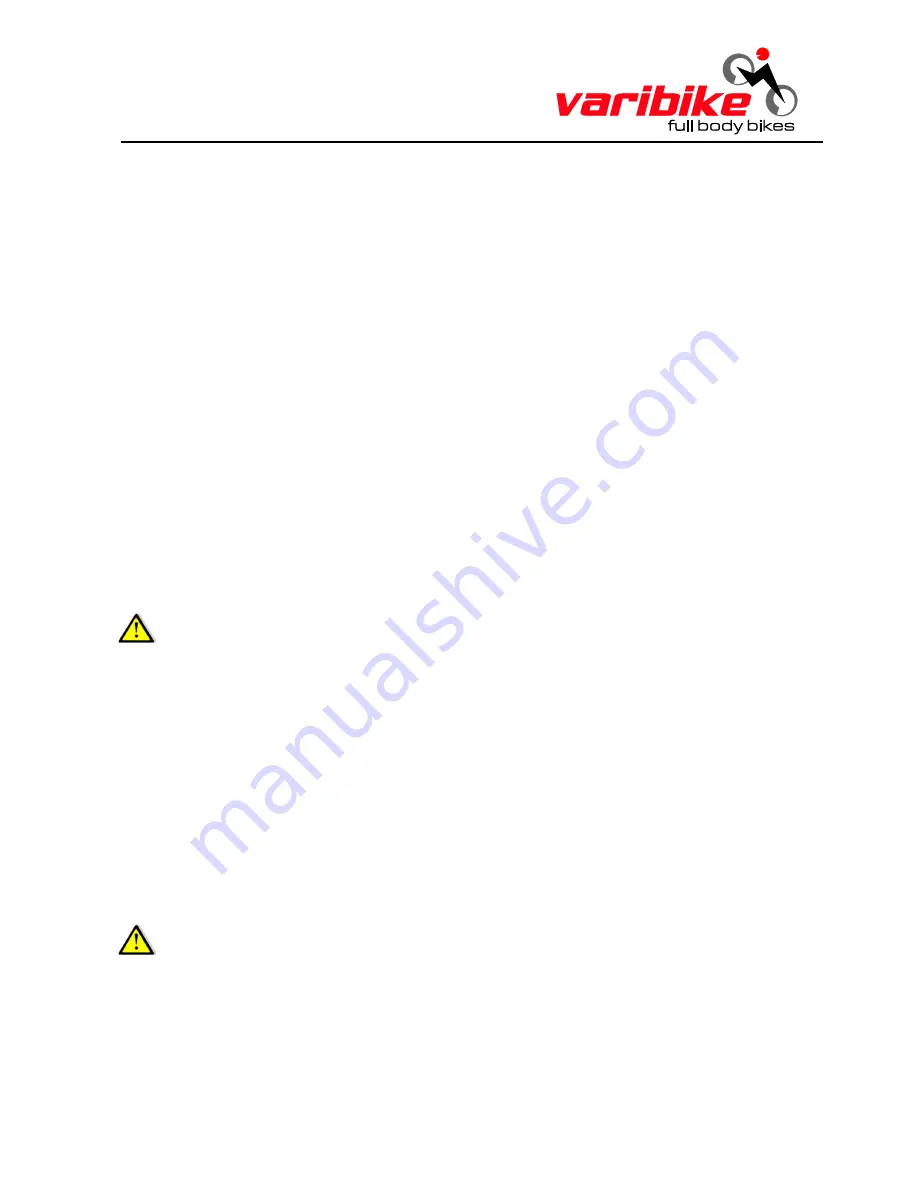
20
Before you ride
Keep your eyes and ears open! Most potential trike defects can be seen or heard beforehand. Listen for unusual
noises during your ride, clicks, and rattles, rubbing noises or vibrations. Try and locate the source, or consult your
dealer. Many potentially expensive repairs can be avoided if the cause is located at an early phase!
You should run a basic function check on your Varibike trike bike before each ride!
Including:
1. Test your steering for tight fit. Here, the steering bearings must not show any play.
2. Test your steering for free swiveling, that means that the steering can be swiveled freely to the complete
right side (until the right limit stop) and to the complete left side (until the left limit stop).
3. Check the arm crank freewheel according free run in the opposite direction and snapping the arm crank
Freewheel in cranking direction.
4. Check the entire bike for notches, cracks, outbreaks, deep scratches or other mechanical damage.
5. Check the tightness of quick-releases, quick release skewers, clamps, bolts and screws.
6. Check the stable condition of the seat and back upholstery.
7. Check the chain tension of the synchron chain. The chain must be tight and straight tensioned on both sides.
8. Check your tyre pressure, valve seating and tyre condition.
9. Ensure that your feet cannot slip from the pedals and make contact with the drive wheel when using the
trike, if necessary by using a special fixation device.
10. Check the mounting of the wheels. Agitate all wheels across the driving direction. The wheels must not move
in the clamp. There should be no audible creaking or rattling noises.
11. Check your rims for wear and/or braking damage. Check disc-brake pad thickness of the disc-brakes.
12. Check the function of the back paddle brake and the hand brake. If all brakes are not fully functional, no trips
may be taken.
!! It must not be possible to pull the hand brake lever through to the hand brake holder!!
13. Drop your Varibike trike vertically from a low height. Listen for rattling noises and check if necessary.
Also, check all bearings and connections.
IMPORTANT: Do not ride your Varibike trike if any of these checks is negative! In case of
doubt, consult your dealer! A defective Varibike trike is dangerous and can lead to serious
accidents and injuries to yourself and others!
IMPORTANT: To avoid damage to your Varibike trike, observe the
maximum permissible total weight of 140 kg
Breaking
Please note that braking efficiency is significantly impaired under wet and/or dirty conditions,
particularly in the case of rim braking systems.
Accessories/spares
Please note: If you intend to replace parts of your Varibike trike, or
attach accessories, this may affect the safety and ride characteristics of your Varibike trike.
Consult your dealer and use only quality Varibike trike parts. Unsuitable or inferior accessories
or spares, or incorrect installation, can result in personal risks. We cannot be held
liable for any resulting injury or damage.
All repairs should be carried out by your dealer. Take your Varibike trike in for a
regular inspection (at least once a year). This will prevent and avoid unnecessary risks.
Important note
on the use of quick releases (including quick release skewers). Certain parts of your Varibike
trike are held in place by quick releases, these allow simple replacement of components and fast adjustments. On
Varibike trikes, amoung others, the wheels and the seat are secured in this way. Please note: an incompletely or
incorrectly locked quick release can result in the loss of the fixed component, and may result in serious accidents with
a high risk of injury!
Saftety driving instructions
Always have both hands at the crank handels while driving. Except when braking. For braking you
take the right hand off the right crank handle and apply with this hand the rear brake. With the left
hand apply the front brake. For braking always use both brakes, the front brake and the rear
brake.
Use particular caution when approaching stairs, edges, drops or other hazard areas.
When driving round a curve, reduce your speed to a minimum.


